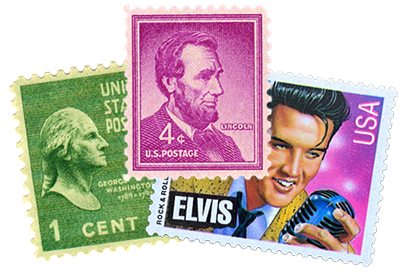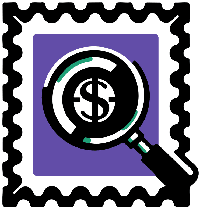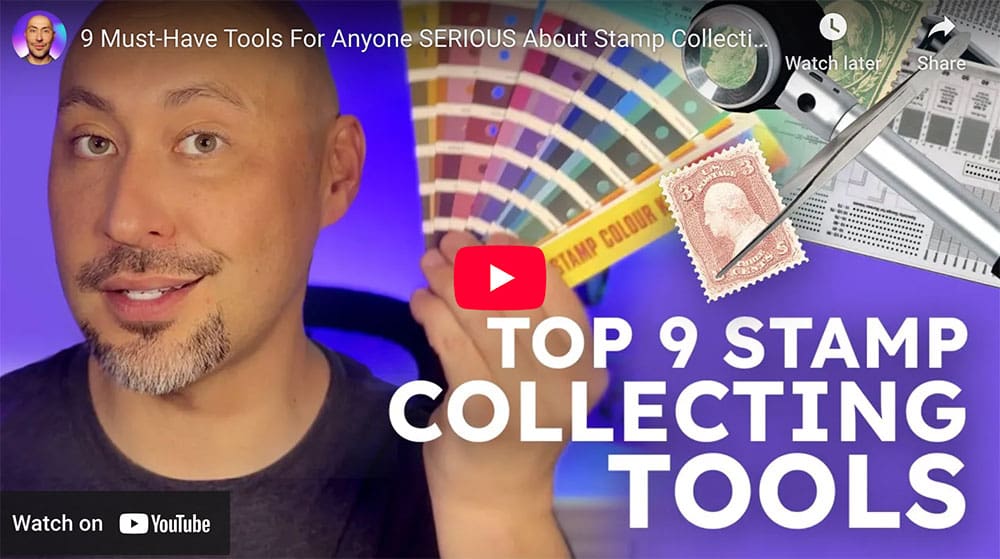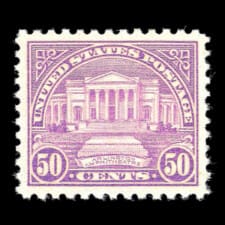Stamp Collectors provides more accurate stamp values than other online pricing apps and websites. That’s because it uses actual stamp sales — and takes additional factors like condition and grade into account, which greatly affect a stamp’s value.
IMPORTANT!
Stamps Issued After 1930

99.99% of ALL stamps issued after 1930 are only worth a fraction of their face value.
LEARN WHY
After 1930, they started to mass produce far more stamps than people used, mostly for their collectibility.
Stamp collecting was once the world’s most popular hobby, all the way up to the 1990’s. Unfortunately with the invention of the internet, people have found new ways to entertain themselves.
With less collectors, and the same amount of postage stamps floating around out there, values have dropped all the way below face value. Just because something is old, does not make it valuable!
However, these types of stamps can still have significant value, especially if you have them in bulk. Companies like SellUnusedStamp.com will pay cash for your United States stamps issued after 1930.
If you have stamps you think are older than 1930, they may have a premium value. You can get a free stamp appraisal here, or continue scrolling to the stamp value finder tool below.
Find Stamp Values By Scott Number
Find values for 640+ unique Scott Numbers including back of book issues. There are currently over 6,600 Fair Market Values for United States stamps.
What Is A Scott Number? Scott numbers are unique ID’s given to each stamp to help identify and value it. If you’re not sure of the Scott number, use the free Stamp Identification App to look up values.
How To Use This Tool
Stamp Value Search
Only enter the Scott number, for example 10A. Do not use hashtags. Do not use spaces.
Or Try One Of These…
To search for full sets or ranges add a dash, for example 581-591. To search for Confederate issues use the prefix CSA with no spaces, for example CSA4. For Canal Zone use the prefix CZ, for example CZ90. For Guam use the prefix GU, for Hawaii use HI, for Philippines use PH, for Puerto Rico use PU.
* The Scott Numbers are the copyrighted property of Amos Media Company, and are used here with permission from Amos. The marks Scott and Scott’s are Registered in the U.S. Patent and Trademark Office, and are trademarks of Amos Media Company. No use may be made of these marks or of material in this exhibition, which is reprinted from a copyrighted publication of Amos Media Company., without the express written permission of Amos Media Company, Sidney, Ohio 45365
What Is Fair Market Value?
The Fair Market Value (FMV) system is based on the average value of sale prices realized. Unlike other value systems, the FMV provides the value one could expect based not only on condition and grade, but important factors such as gum disturbance, cancel strength, and degrees of faults.
The database is regularly updated, so be sure to come back soon to see more stamp values!
Get Even More Details
There are currently Stamp Identification Pages for select issues. Aside from values, these pages contain historical information, identification details, varieties, and links to the original sale listings where you can see certificates and any specific faults.
Attribute Definitions
Image
If a stamp has an image, it is clickable and you can view a larger image and go to the original sales listing to view certificates, and details about any faults. Depending on where it was sold, you may need to create an account or join a Facebook group to access.
Sale Date
The date the stamp was sold.
Price
The Price is the realized sale sale price of the stamp that was sold.
Type
The Type refers to the multiple of the stamp. For example, a single stamp vs. a pair. “Strip” is generally a strip of 3 stamps, and sometimes requires an imprint and plate number depending on the issue. “Block” is generally a block of 4 stamps without a plate number, unless otherwise noted as such in Scott. “Plate Block” indicates the plate number block designation in Scott, whether a plate block of 4 or 6 stamps depending on the issue.
Condition
| Mint | The stamp has original gum or was issued without gum “NGAI”. |
| Unused | The stamp is not canceled and has no gum, or is regummed. |
| Used | The stamp has been postally used, indicated by a cancellation mark. |
| On Cover | A stamp that is postally used on an envelope or entire mailing piece. |
Gum
| Never Hinged | Full undisturbed OG. |
| Lightly Hinged | Indicates very minor gum disturbance of 5% or less of surface area. |
| Hinged | The stamp has a hinge remnant or disturbed gum between 5%-50% of the surface area. |
| Heavily Hinged | A hinge remant or disturbed gum over 50% of the stamp, or that which causes the stamp to warp or bend unnaturally. |
| Part OG | Stamp has less than 50% original gum remaining. |
| NGAI | Refers to unused stamps that were issued without gum “No Gum As Issued”. Condition is classified as “Mint”. |
| None | “None” can indicate an Unused stamp with no gum, or Used stamps which by default have no gum. |
Cancels
| Basic | Cancels that do not generally provide any added value. They can be hand stamped or machine applied. |
| Color | Colored cancels that add a premium value. |
| Special | A unique type of cancel, such as “PAID” or “Steamship”, that adds value to the stamp. |
| Fancy | Any type of pictorial or image based cancel that generally adds a premium value. |
| Pen | Manuscript cancels applied with a writing instrument by hand where the cancel type reduces the stamp value. |
| None | “None” indicates a Condition that is Mint or Unused and therefore has no cancel. |
Cancel Strength
| Light | Lightly applied cancels covering 5% or less of the stamp. |
| Normal | Cancels that cover over 5% of the stamp, and do not obstruct more than 50% of the stamp design. |
| Heavy | Obtrusive cancels that obstruct more than 50% of the stamp design. |
| SOTN | “Socked On The Nose” cancels are perfectly centered over the stamp, which adds value. |
| None | “None” indicates a Condition that is Mint or Unused and therefore has no cancel strength. |
Grade
Grades range from Very Good (VG) to GEM. Although a grade lower than VG, known as “Average,” technically exists, anything VG or below is treated as having the same value. Those that fall between two grades are indicated with a /. Those that have Jumbo margins are represented with a “J”. Learn more about stamp grades.
Certs
Whether or not a stamp has a certificate of authenticity.
Graded Certs
If a stamp has a graded cert, you can determine it’s grade by looking at the Grade column. For example, a grade of VF would indicate a graded cert of 80.
NA
If NA, or Not Applicable” is present, it means that the particular attribute does not generally affect the value of the particular issue. For example, many Revenue stamps do not have different values for Mint vs Used, thus their condition is “NA”.
Fault Explanations
No Faults
Stamp is generally sound with no faults. May still have natural occurrences such as gum skips, gum bends, short gum, or gum wrinkles which may slightly effect the value.
Minor Faults
Stamp may contain one or a combination of the following:
- Small faint or pressed out crease less than 5mm.
- 1-2 short perfs that are less than half the height of the other perfs, but not shorter than the bottom of the other perf holes.
- Small shallow thins less than 5mm and undetectable from the front side when placed on black background.
- Small light stains or toning not distracting from the stamp design.
Moderate Faults
Stamp may contain one or a combination of the following and may also contain Minor faults:
- Reperforated on only one side.
- Faint crease more than 5mm that is not visible on front side.
- 3-4 short perfs where the height is below the middle height of the other perfs but not below the bottom of the other perf holes.
- One repaired perf tip.
- Medium shallow thins more than 5mm in size but undetectable from front side when placed on black background.
- Filled thins less than 1mm.
- Tears less than 1mm, repaired or not.
- Moderate stains or toning.
Major Faults
Stamp may contain one or a combination of the following and may also contain Minor and Moderate faults:
- Reperforated on more than one side.
- Heavy crease visible from front side of the stamp.
- Deep thin of any size that is visible from the front side when placed on black background
- Filled thins more than 5mm.
- Tears larger than 1mm, reparied or not.
- Holes of any size.
- More than 4 short perfs where the height is less than the middle of the other perfs.
- More than one repaired perf tip.
- Pulled perfs that are removed below the bottom of the other perf holes.
- Rebacked stamps.
- Heavy stains or toning.
Sort Results
Add filters to get a more accurate value!
| Number Of Stamps: 0 | View Dedicated Page For This Issue | Fair Market Value: $0.00 | |||||||||
| Image | Sale Date | Type | Condition | Gum | Cancel | Cancel Strength | Grade | Cert | Graded Cert | Faults | Price |
|---|---|---|---|---|---|---|---|---|---|---|---|
|
|
Sale Date: {{Date}} | Type: {{Count}} | Condition: {{Condition}} | Gum: {{Gum}} | Cancel: {{Cancel}} | Cancel Strength: {{Strength}} | Grade: {{Grade}} | Cert: {{Cert}} | Graded Cert: {{Graded}} | Faults: {{Faults}} | Price: {{Amount}} |
Fair Market Value: $0.00 |
|||||||||||
Apply Filters To Stamp Value Results
Simply set the provided filters below to see the different Fair Market Values for this stamp. By default ALL sales records are shown, so the FMV is calculated based on an average of all sales regardless of condition, grade, faults, or multiples. To get a more accurate value, use the filters!
Factors That Affect Stamp Values
There are several factors that can affect the value of a stamp. Below are some of the main ones, but there can be others as well.
Stamp Condition
The condition of a stamp plays a significant role in determining its value. Stamps with no flaws or damage, are generally worth more than those with imperfections or faults. Remember, just because something is old doesn’t mean that it’s worth money.
Also if it has been used or canceled, it can affect stamp values. Most of the time, unused stamps are worth more than used ones. But there are a few issues that are worth more genuinely used rather than mint.
Grade
The “grade” of a stamp refers to how well the image is centered on the paper. It greatly affects the value of a stamp, especially ones issued before 1930. The reason is that the printing methods improved over time, and the older stamps were rarely printed with good centering, thus making them more scarce and valuable.
The grading scale for stamps is as follows. The $ symbol indicates the potential value comparatively.
Very Good $
A portion of the design is missing outside the stamp boundaries.
Fine $$
The design is complete within the stamp boundaries, but one or more sides of the design come very near to touching the edge of the stamp.
Very Fine $$$
The design is does not come close to touching any of the edges of the stamp on all four sides. At least 2 of the 4 sides are equally spaced from the edge of the stamp.
Extremely Fine $$$$
The design is well balanced, near equally distant from the edge of the stamp on all four sides.
Superb $$$$$
The design is almost near perfect centered on the stamp with the exact measurements from the design to the edge of the stamp being only microscopically off center.
Gem $$$$$$
The stamp is considered perfectly centered.
Gum Condition
If it’s an unused stamp, the gum (or adhesive) on the back of a stamp matters a great deal. Undisturbed gum, also know as “never hinged”, is in the original condition from the day it was printed. These bring the highest values.
If there is a disturbance on the gum, it will lower it’s value, depending on how much gum has been disturbed. Usually the disturbance is caused by it having previously been mounted (or hinged) in a stamp album.
Also beware of “regumming”. This is where someone applied adhesive to the back of a stamp to make it look like the original gum, or make it look never hinged. Some cases of regumming are so good, it takes an expert to determine if the gum is authentic or not. Regummed stamps are worth less than those with their original gum intact.
Cancellations
On used stamps, the type of cancel can greatly impact its value. For example special cancels, like “PAID”, can give an indication of how the stamp was used. Other cancels provided information on when it was used, such as date cancels. Or where it was sent from, like town cancels.
Some illustrated cancels, also referred to as “Fancy Cancels”, can add large premiums to the stamp value. The color and clarity, or “strength”, of the cancel can also impact value in either direction.
Faults
Faults are unnatural imperfections a stamp may acquire over time and by handling. Some common ones include:
- Thins – the stamp paper is “thinned” or partially reduced in thickness in spots due to improperly removing the stamp from the envelope or stamp album.
- Reperforations – altering the stamps perforations, usually done to make the stamp more visually appealing, remove faulty edges, or change the identification of the stamp.
- Short Perfs – perforations (sometimes called the “teeth” of a stamp) that are shorter than normal. They generally occur during the detachment of a stamp from its neighboring stamps in a sheet, block, or pair.
- Pulled Perfs – like short perfs, but the perforation has been pulled out, causing a tear into the stamp.
- Creases – creases occur from improper handling (on and off cover). They can also occur naturally during the printing or gumming process.
- Tears – tears come in all sizes and shapes. Depending on the severity they can
- Stains & Toning – can occur from soiling the stamp or leaving it exposed to UV light, like sunlight.
There are multiple degrees of faults. Of the ones mentioned, they can be light or heavy, and can affect the value accordingly.
Other Places To Find Stamp Values
If you’d like to continue your research or get a second opinion about these stamp values, here are some options:
Stamp Pricing Catalogs
One of the fundamental tools for stamp valuation is the stamp catalog. Comprehensive catalogs like the Scott Catalog, Stanley Gibbons, and Michel provide detailed information about stamps from around the world.
These catalogs list stamps with their respective descriptions, images, and estimated values based on their condition and rarity. Collectors often refer to these catalogs to get a general idea of a stamp’s worth.
However, you should note that the values they provide are for stamps graded Very Fine in sound condition with absolutely no flaws. That is by far, more of the exception than the rule. The fact is, most stamps are not worse than Very Fine centering (especially the old ones), and the vast majority have condition issues. Even the tiniest flaw can set the value back quite a bit.
Stamp catalogues do not represent the actual market value for most stamps. Therefore, do not take their valuations literally. Instead, use them as a guide to know which stamps are more valuable compared to others.
Online Research
The internet has made it easier than ever to research the value of collectible stamps. Numerous websites and online databases specialize in philately and offer valuable information. Websites like StampWorld, eBay, and HipStamp allow you to search for specific stamps and view recent sales to gauge market prices.
Get A Stamp Appraisal
If you possess stamps of considerable value or rarity, it’s wise to seek a professional stamp appraisal service. Stamp appraisers are experts in the field who can evaluate your collection’s condition, rarity, and historical significance to provide an accurate valuation. You can find certified stamp appraisers through philatelic organizations or auction houses.
Participate in Stamp Shows And Auctions
Stamp shows and auctions are excellent opportunities to meet fellow collectors and gain insights into the current market trends. Auction houses often provide estimated stamp values, and the final price realized at an auction can give you a realistic sense of your stamps’ value. Find stamp shows near you.
Join Philatelic Communities
Joining philatelic forums, clubs, or social media groups can be a valuable resource for assessing stamp values. Collectors within these communities are often willing to share their expertise and provide informal appraisals based on photographs you share.


















